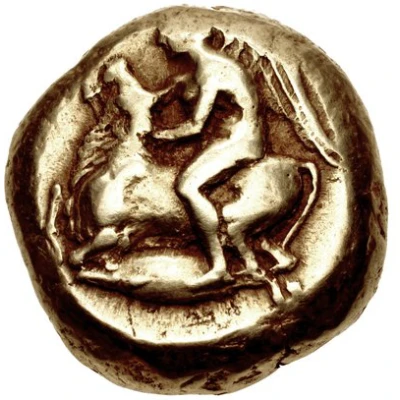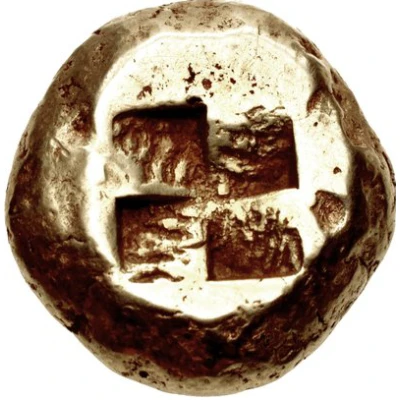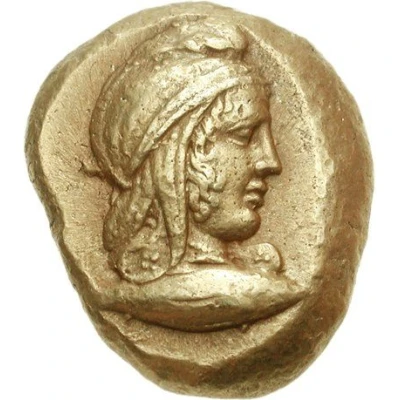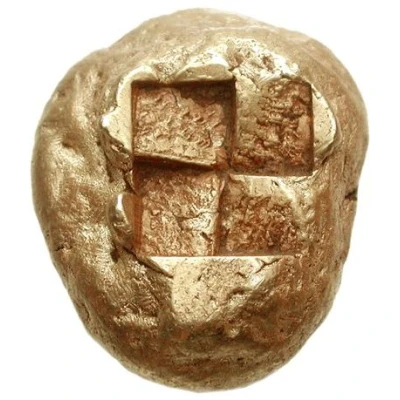
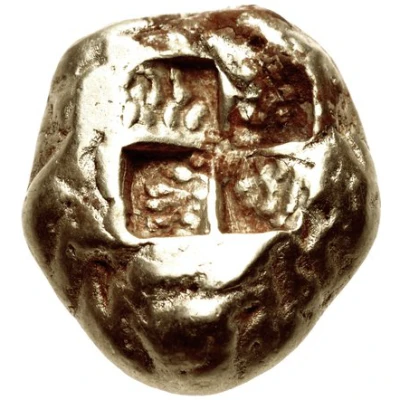

© Classical Numismatic Group, Inc.
Stater
| Electrum | 16.05 g | - |
| Issuer | Kyzikos (Mysia) |
|---|---|
| Period | City administration (600 BC - 1 AD) |
| Type | Standard circulation coin |
| Value | Electrum Stater (1) |
| Currency | Electrum Stater (600-330BC) |
| Composition | Electrum |
| Weight | 16.05 g |
| Shape | Round (irregular) |
| Technique | Hammered, Incuse |
| Demonetized | Yes |
| Updated | 2024-10-10 |
| Numista | N#132239 |
|---|---|
| Rarity index | 100% |
Reverse
Quadripartite incuse square.
Comment
From CNG:J.P. Six (NC 1898, pp. 197-198) first suggested that the bearded male portrait on this stater was that of the Athenian general Timotheos (d. 354 BC), who had raised the siege of Kyzikos in 363 BC (Diod. Sic. 15.81.6), noting a similarity between the coins and a marble portrait in the Capitoline Museum (no. 46). Other authors subsequently took different views. However, in "The Cyzicenes: A Reappraisal," AJN 5-6 [1993-1994], pp. 9-11, Mildenberg defended Six's hypothesis. He noted that Kyzikos was under Persian control from 540 BC until 445 BC, and then from 387 BC until the end of the Achaemenid Empire. During the almost sixty year interval, Kyzikos was allied with Athens as a member of the Delian League. Kyzikos, however, was not banned from continuing to strike electrum staters (per League rules), because Athens saw the coinage as a valuable means of payment and in its best interest. Thus, when Athenian forces under the command of Timotheos successfully raised the Persian siege of Kyzikos in 363 BC (Diod. Sic. 15.81.6), the citizens placed the portrait of the victorious general, complete with laurel wreath, on this issue of staters to show their appreciation of his services and subtly honor him in an already-accepted Athenian associated context.
Interesting fact
The Kyzikos Stater from Mysia, made of Electrum and weighing 16.05g, is believed to have been minted during the reign of King Kroisos (also known as Croesus) in the 6th century BC. This coin features an image of a lion on one side and an inscription on the other, which reads "Kroisos, king of Lydia". The coin's unique blend of gold and silver, known as Electrum, was a distinctive feature of ancient Lydian coins and made them easily recognizable.
